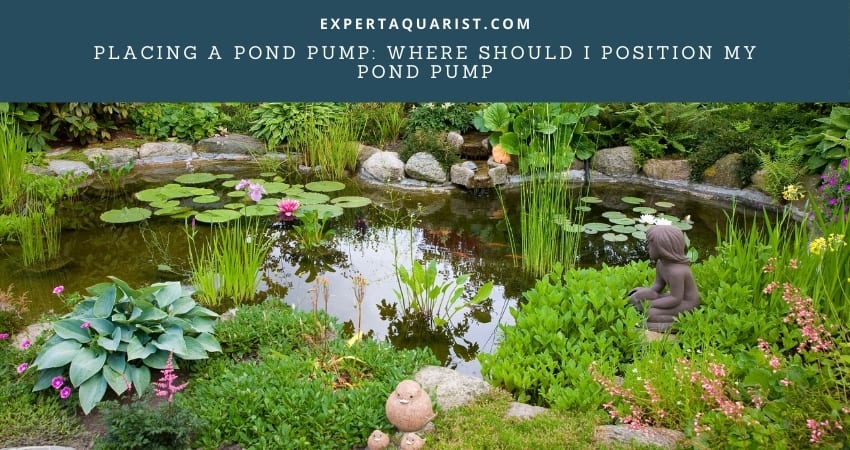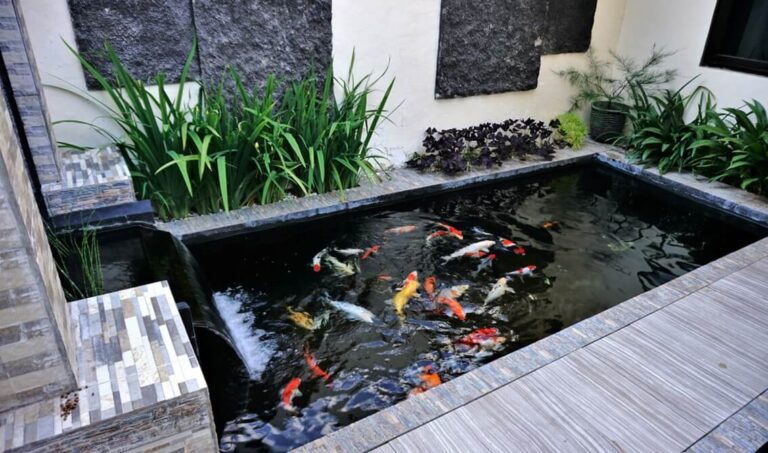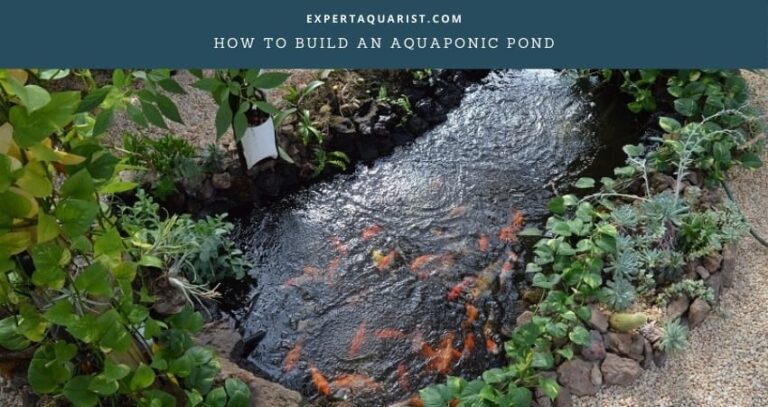Hooray! You’ve just finished building your pond and are ready to enjoy the serenity of water lilies and various vibrant fish. But hold up, there’s still a thing you need to do- placing pumps!
If you’ve been pondering- “Where should I position my pond pump?”, you’re not alone. There is a lot of conflicting information out there and it can be difficult navigating the many opinions.
You should place submersible pond pumps at the deepest accessible part of your pond. Place it in a skimmer box if you got fish. As for external pond pumps, you can place them on dry land on a shed so that sunlight doesn’t tamper with its plastic.
You can learn more about it down below:
Where to install or place your pond pump
Mainly, pond pumps are of two kinds. They are :
- Submersible pond pumps
- External or Centrifugal pond pumps
And depending on what kind of pump you wanna place on your pond, the ideal position would vary. I’ve discussed them down below:

Submersible Pond Pumps
To get the maximum output from your submersible pump, you better place it on the deepest part of the pond. Thus, it will have access to all the water in the pond and can provide maximum oxygen and circulation.
If you have fish or other animals in the water, make sure to place the pump in a skimmer box so that fish or animals can’t enter the pump. You can check some of my favorite pond skimmers here in case you don’t have any.
Although it is ideal to place the pond at the deepest part of the pond, you have to make sure that it is reachable when the need for maintenance arrives. There should be a balance between these two.
Submersible pumps nowadays are put inside a strainer cage so that large particles don’t enter and block the impeller. In the past, they used to have a foam to cover up the cage but it proved to hamper you instead as it’d get clogged up, that’s why newer pumps don’t have foam.
I’ll suggest that you clean the strainer cage and impeller periodically for smooth operation. Other than that, submersible pumps are quite low maintenance.
Positioning a submersible pump to create a waterfall
If you wanna use the submersible pump for the purpose of creating a waterfall, then it should be placed on the other side of the waterfall to ensure maximum circulation.
Otherwise, the falling water will fall on the pump which will result in only a part of the water being circulated.
External Pond Pumps placement
If you have an external pump, you should place it on dry land. This makes things easier as they don’t need skimmers or anything of that sort. But if you are using an external pump, try to place it in a place with a shed. Because sunlight puts an adverse effect on its plastic surface. Although it isn’t that big of a deal, you can never be too careful.
If you have a koi pond or a large pond, it is ideal to use an external pump as they are usually designed to circulate large volumes of water.
Where to place your solar-powered pumps?
Outside of the 2 aforementioned pumps, there is one another which is getting rapidly popular- Solar-powered pumps.
If your pump is solar powered, be absolutely sure to place it in a place that gets a good amount of sunlight during the day. Otherwise, the pump will not work as expected.
A good idea would be to get a solar panel that also has a battery backup, should you choose to invest in solar pumps. Here are some of the best solar-powered pumps available in the market today.
Things you need to know about positioning a pump in a pond
Placing your pump in a pond is just a part of the puzzle. Keeping it functional and efficient is also your job as a pond owner. You should focus on the topics I’m gonna mention below, these are quite important:
Maintenance of your pump
As with all other kinds of machines, pond pumps also need regular maintenance. Although newer models require less maintenance, you still need to do it every once in a while.
The most common way for the maintenance of a pond pump is to drag it out of the water, clean all the dirt and gunk off of it, and put it back in its place. Like I said before, a submersible pump is harder to maintain than a centrifugal pump. Because you have to drag it out of the deepest part of the pond.
Also, never drag the pump out by its electric cord, this will create a whole host of new problems, starting with the disconnection of the pump.
No matter what kind of pump you have, you must clean it at least once every week. Make sure the pump is full of water before you start it.
If there is sludge in the pond, then you gotta lift the pump slightly so that the pump doesn’t get filled with dust and debris. Placing it on a stone with a flat surface or a slab is a great way to accomplish that.
Take out the pump during winter
You have to be extra careful during winter. Make sure to place your pump on a shelf instead of keeping it at the bottom as all fishes in the pond tend to stay near the bottom in winter. The reason behind this is that the water at the bottom is warmer than that at the surface.
But, keeping your pump at the bottom will pump out warm water and replace it with colder water, potentially freezing and killing all your fish.
Additional Read: How To Winterize Your Pond Properly
Be careful of water loss
Keep an eye out for a broken hose or a leaked waterfall. Your pond will get emptied soon enough if the pump is placed at the bottom.
However, if you place it a little bit higher i.e. on a shelf, there will be a little bit of water left under the pump which will help the fish to keep themselves alive should there be such an accident.
Power source
You’ll need an electric source for your pump. The best one I’d say is a GFCI outlet. Whenever it comes directly in contact with water, it’ll shut the entire system down. I love it for its safety.
Installation
Before you touch anything remotely related to electricity, turn off the main power. After positioning the pump, attach the pump with a tubing and connect it to a fountain or waterfall.
You can use a clamp to secure the hose, but don’t make it so tight that you can’t remove it later.
Additional Read: How To Install A Pond Pump
Some final thoughts
Finally, when you are asking yourself “where should I place your pond pump?”- think about what type of water feature it is and the amount of space available.
For example, a waterfall might need more room than a small fountain because there needs to be enough vertical distance for the sound waves produced by falling water to bounce off a rock or other hard surfaces before they dissipate into nothingness.
Having a solid idea about how you want your pond to look will definitely give you a clearer image.






